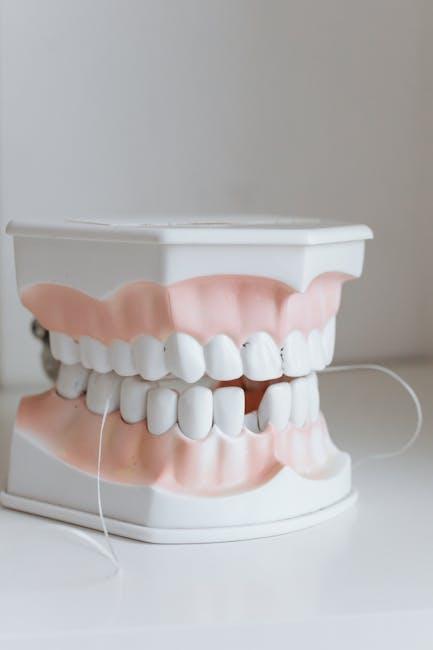
Fluoride Ban Could Create Cavities For 1 Of Every 3 U.S. Kids
Published by U.S. News & World Report
Introduction: The Growing Concern Over Fluoride Regulations
Fluoride has long been hailed as a cornerstone of dental health, helping reduce tooth decay across populations worldwide. In the United States, community water fluoridation has been a key preventive measure, especially benefiting children. However, recent discussions around fluoride bans are stirring fears that millions of kids could suffer from increased tooth decay and cavities. According to experts, a fluoride ban could potentially create cavities for 1 of every 3 U.S. children, drastically reversing decades of progress in dental health.
Why Is Fluoride So Important For Children’s Dental Health?
Fluoride is a naturally occurring mineral that strengthens tooth enamel and helps prevent decay. Its benefits have been supported by numerous studies and public health initiatives, such as the addition of fluoride to community water supplies, fluoride toothpaste, and dental treatments.
Key Benefits of Fluoride for Kids
- Prevents tooth decay: Fluoride strengthens enamel, making teeth more resistant to harmful acids from plaque and sugary foods.
- Reduces cavities: Children consuming fluoridated water or products generally experience fewer cavities.
- Cost-effective: Community water fluoridation reduces dental treatment costs by preventing decay early.
- Easy and safe: Extensive research validates the safety of controlled fluoride use in children’s dental care.
The Impact of a Fluoride Ban: What the Data Shows
The proposed or enacted fluoride ban in certain U.S. regions raises the alarming prospect of dental health setbacks, especially in vulnerable populations. Recent findings indicate that removing fluoride from public water supplies and limiting its use could cause a cavity surge among children.
| Statistic | Impact Without Fluoride |
|---|---|
| Children likely to develop cavities | 1 in 3 (approximately 33%) |
| Increase in dental treatment costs | Up to 50% rise nationally |
| Chance of early tooth loss | Significantly higher among kids without fluoride exposure |
This spike in tooth cavities will disproportionately affect low-income and rural communities, where dental care access is already limited.
Case Studies: Regions That Removed Fluoride and Their Dental Outcomes
Examining areas that reduced or eliminated fluoride from water supplies provides insight into the potential consequences of a nationwide ban:
Case Study 1: Calgary, Canada
Calgary discontinued water fluoridation in 2011, leading to a noticeable increase in dental decay among children over the following years. Studies showed a significant jump in early childhood cavities compared to neighboring fluoridated cities.
Case Study 2: Portland, Oregon, USA
After the city considered removing fluoride from the water, experts warned of increased cavities especially for underserved children. Portland still maintains fluoridated water due to these recommendations, highlighting the importance of fluoride in preventive care.
Practical Tips to Protect Your Child’s Teeth If Fluoride Is Restricted
Despite possible changes in fluoride policies, parents can take proactive steps to safeguard their children’s dental health:
- Use fluoride toothpaste: Consult with your pediatric dentist about safe fluoride toothpaste amounts for your child.
- Maintain routine dental visits: Regular check-ups help catch decay early and provide professional dental cleanings.
- Encourage a balanced diet: Limit sugary snacks and drinks to reduce acid attacks on teeth.
- Promote good oral hygiene: Teach children to brush twice daily and floss regularly.
- Ask about fluoride treatments: Dental offices can provide topical fluoride varnishes or gels as alternatives if water fluoridation is unavailable.
Firsthand Experiences: Parents Voice Their Concerns
Maria, mother of two: “When my town considered stopping water fluoridation, I worried about my kids’ teeth. We had to switch to fluoride treatments at the dentist. It’s definitely more expensive and less convenient than before.”
James, pediatric dentist: “Fluoride has been a game-changer in pediatric dentistry. Without it, we’re likely to see more cavities and higher rates of tooth extractions in children, which can affect their overall health and confidence.”
Conclusion: Why Fluoride Remains a Vital Part of Children’s Oral Health
The potential fluoride ban poses a serious risk to the dental well-being of millions of U.S. children. Evidence consistently supports fluoride’s role in preventing cavities, reducing dental costs, and fostering lifelong oral health habits. While debates around fluoride continue, it is crucial for policymakers and parents alike to weigh the consequences carefully.
By understanding fluoride’s benefits and taking practical dental hygiene steps, we can help ensure children’s smiles remain bright and healthy despite changing regulations. For those concerned about fluoride restrictions, partnering with dental professionals and embracing comprehensive oral care strategies will be more important than ever.
Stay informed, advocate for responsible dental health policies, and prioritize your child’s oral hygiene to combat the potential rise in cavities from any fluoride ban.


